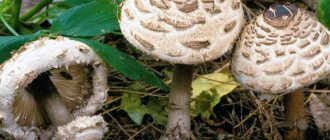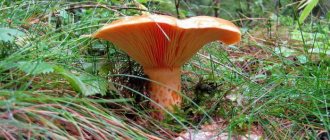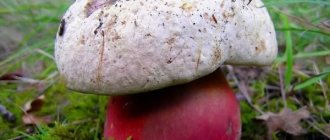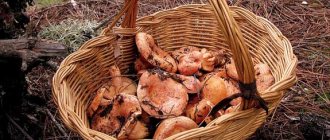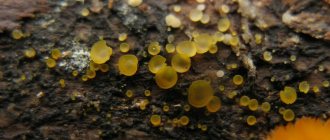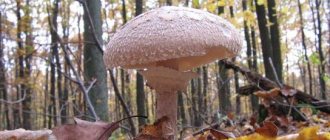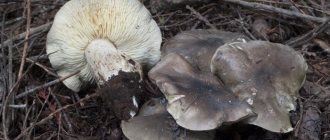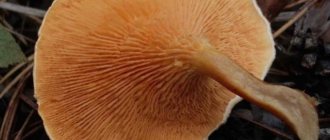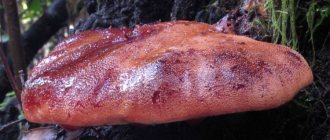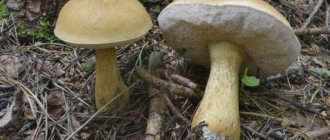The liverwort mushroom is perhaps the only representative of the genus Fistulina and the family of tree fungi, the Basidiomycetes. A real “cosmopolitan”, as it has spread throughout the globe, in places where oak trees grow. There is even evidence that mother-in-law or wolf's tongue parasitizes eucalyptus trees in Australia. In 1997, Japanese fungotherapists and mycologists introduced this species into culture and patented a method for growing it in industrial conditions.
Description of the mushroom
This species received its unusual name for its resemblance to the liver of animals; it is called the common liverwort, the common liverwort, and the hepatic polypore.
People humorously call it Teschin or wolf tongue. In Europe and among the Western Slavs, the species is called Bovine tongue. The English folk name - The poor man's beefsteak - is quite eloquent. Latin name: Fistulina hepatica. Phylum: Basidiomycota, Order: Agaricales, Family: Fistulinaceae.
The liver mushroom has recently been included in the Red Book of Belarus and is protected by law in Poland. The cost of 1 kg of mushroom in Europe varies from 6 to 50 euros.
The cap has a tongue-like, elongated shape, tapering towards the stem. Its size varies between 25–30 cm, thickness is about 6 cm. The surface is sticky and lumpy. In young specimens it is orange in color, slightly rough, and with age it becomes purple-burgundy and gelatinous.
The hymenophore (lower part of the cap) is finely porous, first yellowish, then brown. Upon examination, it seems that this layer consists of small tubes. When pressed, it darkens, often the surface begins to become covered with pink drops, which determines the name of the species.
Interesting! When cut, the mushroom also looks like a piece of pork liver - with the same marble veins and moiré stains. The older, fattier and juicier the fruiting body is, the more its resemblance to beef meat or liver becomes stronger when cut.
The pulp is characterized by a dense, elastic structure, it is fleshy and juicy. In adult specimens it hardens and becomes fibrous. The smell is slightly fruity, the taste is sour-bitter.
The leg is lateral, short, and often not visible at all.
A little history
The first mention of this mushroom dates back to 1769; the species was identified as Boletus buglossum Rezius.
Contraindications
Liver mushroom has no contraindications and can be used by both adults and children. For young women who are breastfeeding or pregnant, there is little reliable information about the safety of mushroom consumption in general. Therefore, if you have not used one or another of them before, then it is better to abstain, at least until the baby is six months old. By this time, his stomach will be more able to tolerate innovations in his mother’s diet.
You might be interested in learning how to grow champignons in a greenhouse.
Mushrooms are excellent sources of protein, fiber, B vitamins (especially niacin), vitamin C, calcium, minerals and selenium. They also contain antioxidants and many other beneficial substances. Collect them starting in the second half of summer, cook them, eat them fried or raw and strengthen your body thanks to their nutritional and medicinal properties.
Growing at home and in the country
Common liverwort can be grown in the country by introducing the mycelium inside an oak log (log, stump). The process consists of the following stages:
- In large logs and stumps, holes with a diameter of 10 mm and a length of 70 mm are drilled, and the block is driven in completely. If the logs or stumps are small, drill holes of a smaller diameter, drive part of the block there, and cut off or break off the part that remains outside.
- If the wood is dry, before planting mycelium in it, you need to moisten it, “saturate it with moisture. Chocks are soaked for 2-3 days in containers with water or in natural reservoirs. Dry stump on the root is doused 3-5 times a day for a week. The mushroom stick itself (oak block) can also be kept in water for 1.5-2 hours before planting.
- After infection, logs are placed in shady places and damp places in garden plots or indoors (basements, cellars, sheds). They can be left outside on a permanent basis; the mycelium tolerates any frost; it is not necessary to cover them for the winter. They can be brought into a room with above-zero temperatures, where they will continue to bear fruit (from +8 °C).
- The first mushrooms appear within 3–7 months after planting, in some cases up to 12 months, depending on the density of the wood and environmental conditions.
Important! The yield of mother-in-law's tongue is at least 35% of the weight of the hemp, but most often it is much higher. From one oak block (mushroom stick) you can get 1 kg of mushrooms or more!
Methods for pickling liverworts
Liverworts can be used not only for preparing first and second courses, but also pickled, salted and dried for the winter. Before pickling, fruit bodies require long-term heat treatment. They are boiled three times for 20 minutes, each time in fresh water. The last time you need to cook it is in lightly salted water. For a 0.5 liter jar you should take the following ingredients:
- boiled mushrooms;
- 1 tsp each rock salt and sugar;
- 1 tbsp. table vinegar;
- 4 peas of allspice;
- 2 hot peppers;
- 1 bay leaf;
- 0.5 tsp grainy mustard.
Preparing for pickling
You can add a clove of garlic and a piece of horseradish root to each jar. Spices, sugar and salt are placed in sterilized containers. The hot mushroom mass is placed in jars and poured with boiling water. Add 1 tbsp to each jar. vegetable oil. The cans are rolled up and insulated. After cooling, the marinade is transferred to a dark, cool room.
False doubles
Has no doubles. There is no mushroom in the forest that looks like a “tree liver”. Pay attention to the photos, which very eloquently prove this statement. But some lovers of quiet hunting may well confuse this species with others, although this is quite difficult.
Dangerous twins
| Type name and differences | Bristle-haired tinder fungus | Tinder fungus |
| What does the fruiting body look like? | Cap, often formed by several caps; Juveniles have a red-orange hue, which turns to almost black or dark brown with age. | fan-shaped body with cork structure |
| Pulp | Has a brown color | Gives off a woody aroma |
| Where can I meet | affects deciduous trees (apple, alder, oak, ash, elm, poplar, etc.). | They grow in groups, although single specimens are also found. |
Environmental characteristics
In general terms, ox tongue is similar to a mushroom from the tinder fungus family, although for them it is only a distant relative. At its core, it is a parasite and destroyer of the trees on which it grows.
It usually settles in places of damage, in cracks of old trees and even on near-surface roots. One tree can be inhabited by a whole family of liverworts of different ages. They mainly grow in the lower part of the trunk, but can rise to a height of 1-1.5 meters. Often they themselves cause the formation of hollows. They gain weight in the second half of summer and on rainy autumn days. In the southern regions they bear fruit until November.
Names and types of edible mushrooms
Evaluation of taste qualities, medicinal properties, benefits and possible harm
When young, before the flesh becomes woody, Fistulina hepatica is considered a good edible mushroom with a delicate flavor and a strong sour taste. It can be cooked in a frying pan, added to salads with herbs and olive oil, pickled, frozen, boiled, pickled, fried, or made into cutlets.
Interesting! The liverwort is rich in vitamin C: 100 g of its pulp contains the daily intake for an adult.
Experts who study the medicinal qualities of mushrooms claim that liverworts are very useful in the treatment of cancer. They restore disrupted metabolic processes, help cleanse the body and are wonderful
antioxidants.
Note! Any treatment must be prescribed and accompanied by a doctor. Self-medication is unacceptable and will lead to negative consequences!
Mother-in-law's tongue is rich in ascorbic acid, it contains:
- vitamins D and PP;
- minerals;
- proteins;
- phosphorus;
- carbohydrates;
- water.
It is not recommended to use these mushrooms for diseases of the gastrointestinal tract, kidneys, liver and gout. It is not advisable to give dishes from it to children.
Processing and cooking options
Preparing liver mushrooms is quite simple. They should be soaked in water before cooking. The duration of soaking depends on the age of the fruit - the older it is, the longer it takes to soak. Young mushrooms are soaked for several hours, adults - no more than a day. After this procedure, the mucus is removed from the caps and washed with running water.
Mother-in-law's tongue is used to prepare cutlets, caviar and soups. They can be boiled, fried, dried and stored in jars for the winter. Here are some popular recipes:
- A very common way to cook liverwort is by frying it in a pan. For cooking, prepare 2 kg of mushrooms, an onion, vegetable oil and salt. The frying recipe is quite simple:
- The prepared fruits are placed in a saucepan and filled with salted water. Place the container on the stove and cook over medium heat for 20 minutes;
- the boiled mass is poured into a colander, washed and cut into pieces;
Fried liver mushroom - Place the mushrooms on a preheated frying pan and fry for about 20 minutes, stirring regularly;
- After the moisture has evaporated, add the onion and fry until tender. Salt and pepper are added to taste.
the onion is peeled and cut into half rings;
Fried mushrooms are often seasoned with sour cream or mayonnaise. Liverworts are perfect for potato dishes.
Cooking mushroom cutlets
Boil the soaked fruits over low heat for about 30 minutes. The mushroom mass is drained into a colander and washed. After cooling, the mushrooms must be ground in a meat grinder. Add salt, pepper, egg and onion to the resulting mixture. Cutlets are formed from minced meat, rolled in flour or breadcrumbs and fried until tender.
LiveInternetLiveInternet
—Tags
—Categories
- Anime and Japan (48)
- Anime Diary (3)
- Anime reviews (35)
- Cinema (8)
- Life (7)
- Sundries (11)
- Tyrant Diaries (2)
- Personal (27)
- Brain twisters (35)
- My stories. Miscellaneous (27)
- Music and video (28)
- Voice acting (4)
- Fiction defects (2)
- Tales of Yarrow (4)
- Handicraft (12)
- Knitting (8)
- Photos: World of the littered horizon (21)
- Excursions and trips (11)
- Reader (6)
—Search by diary
—Subscription by e-mail
—Interests
-Friends
— Regular readers
—Communities
-Statistics
Fried ox tongue
To prepare this dish, you need to take two kilograms of mushrooms, onions, sunflower oil and salt. The recipe is quite simple and accessible:
- Place the washed mushrooms in a saucepan and cover with salted cold water. Place on the fire, bring to a boil and then cook for another 20 minutes.
- Then drain the mushrooms in a colander and rinse. After the water has drained, cut the ox tongue into large pieces.
- Cut the onion into half rings.
- Heat vegetable oil in a frying pan and add mushrooms. Fry, stirring, for 20 minutes.
- When the moisture has evaporated, add the onion and cook until done. Add salt and pepper to taste. If desired, you can add sour cream or mayonnaise. Serve with mashed potatoes.
If you follow all the rules for preparing liver mushrooms, you can make many interesting and tasty dishes that, with their unusualness, will add a unique touch to the meal and make you want to try them more than once.
Edibility
Belongs to the edible fourth category. Overgrown specimens have a sour taste; it is better to eat young specimens. Mother-in-law's tongue is for an amateur, because many do not accept the texture of the pulp or the sour taste. Combines a number of beneficial properties and healing qualities. The recipes are quick and easy to prepare.
The pulp has a high content of vitamins, especially vitamin C. Because of this, the specimen has a sour taste. 100 grams of fresh forest product contains the daily requirement of vitamins.
Liverwort can be cooked directly in nature at a picnic; for this you can use a barbecue grill. A frying pan is also suitable in which you can fry the product as a separate dish or with potatoes. Excellent for pickling and salting. Distributed in oak forests. Belongs to the edible fourth category.
